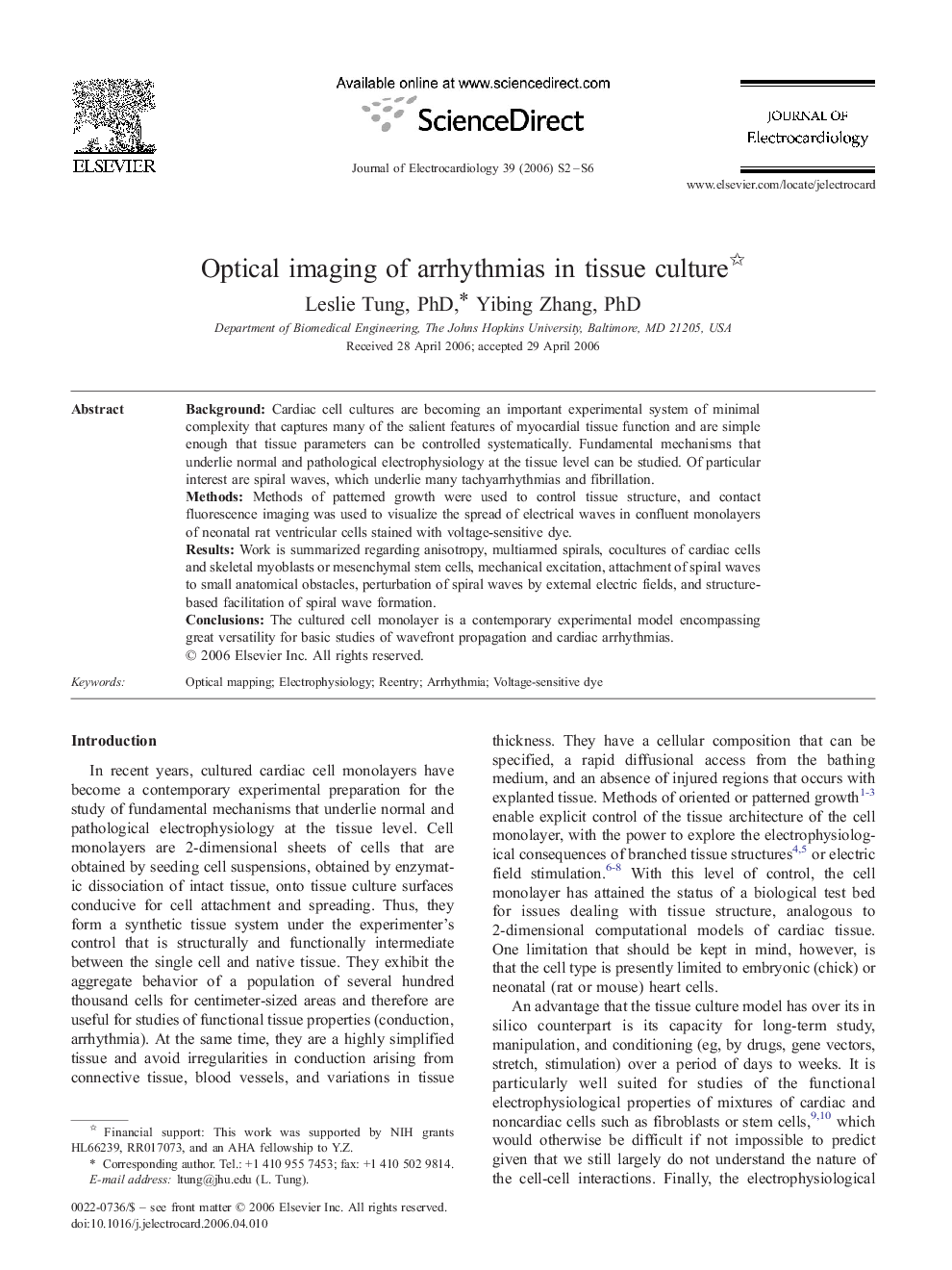| Article ID | Journal | Published Year | Pages | File Type |
|---|---|---|---|---|
| 2968912 | Journal of Electrocardiology | 2006 | 5 Pages |
BackgroundCardiac cell cultures are becoming an important experimental system of minimal complexity that captures many of the salient features of myocardial tissue function and are simple enough that tissue parameters can be controlled systematically. Fundamental mechanisms that underlie normal and pathological electrophysiology at the tissue level can be studied. Of particular interest are spiral waves, which underlie many tachyarrhythmias and fibrillation.MethodsMethods of patterned growth were used to control tissue structure, and contact fluorescence imaging was used to visualize the spread of electrical waves in confluent monolayers of neonatal rat ventricular cells stained with voltage-sensitive dye.ResultsWork is summarized regarding anisotropy, multiarmed spirals, cocultures of cardiac cells and skeletal myoblasts or mesenchymal stem cells, mechanical excitation, attachment of spiral waves to small anatomical obstacles, perturbation of spiral waves by external electric fields, and structure-based facilitation of spiral wave formation.ConclusionsThe cultured cell monolayer is a contemporary experimental model encompassing great versatility for basic studies of wavefront propagation and cardiac arrhythmias.
